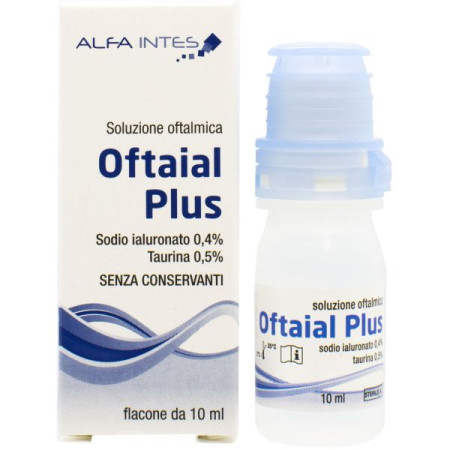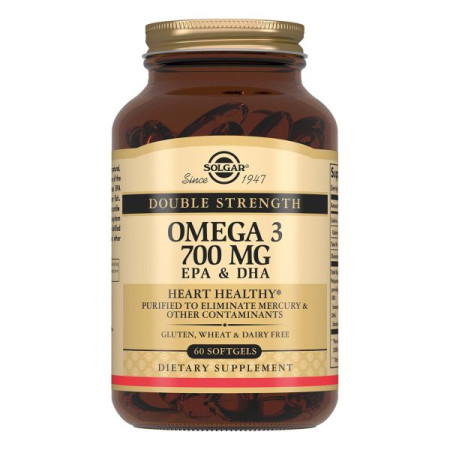Citramon-Darnitsa tablets No. 10

Instructions for Citramon-Darnitsa tablets No. 10
Composition
active ingredients: acetylsalicylic acid, paracetamol, caffeine;
1 tablet contains: acetylsalicylic acid 240 mg, paracetamol 180 mg, caffeine 30 mg;
Excipients: citric acid monohydrate, potato starch, povidone, cocoa, calcium stearate.
Dosage form
Pills.
Main physicochemical properties: light brown tablets with inclusions, flat-cylindrical shape with a bevel and a score, with the smell of cocoa.
Pharmacotherapeutic group
Analgesics and antipyretics. Acetylsalicylic acid, combinations without psycholeptics. ATX code N02B A51.
Pharmacological properties
Pharmacodynamics.
The drug has analgesic, antipyretic and anti-inflammatory effects. The components that make up the drug enhance each other's effects.
The antipyretic effect of acetylsalicylic acid is realized through the central nervous system by inhibiting the synthesis of PGF2 in the hypothalamus in response to the influence of endogenous pyrogens. The analgesic effect has both peripheral and central origin: peripheral effect - inhibition of prostaglandin synthesis in inflamed tissues; central effect - effect on the hypothalamic centers. Acetylsalicylic acid also reduces platelet aggregation.
Paracetamol has analgesic, antipyretic and very weak anti-inflammatory effects, which is associated with its effect on the thermoregulation center in the hypothalamus and its weak ability to inhibit prostaglandin synthesis in peripheral tissues.
Caffeine stimulates the central nervous system. Caffeine increases positive conditioned reflexes, stimulates motor activity, weakens the effect of hypnotics and narcotics, and enhances the effect of analgesics and antipyretics.
Pharmacokinetics.
Not studied.
Indication
Treatment of mild or moderate pain syndrome in headache or toothache, primary dysmenorrhea, migraine, arthralgia, neuralgia, diseases accompanied by hyperthermia of various etiologies (as an antipyretic).
Contraindication
Hypersensitivity to the components of the drug, other salicylates; severe liver and/or kidney dysfunction, congenital hyperbilirubinemia, Gilbert's syndrome, glucose-6-phosphate dehydrogenase deficiency, alcoholism, blood diseases, hemophilia, hemorrhagic diathesis, severe anemia, leukopenia, thrombosis, thrombophlebitis, hemorrhagic diseases, acute peptic ulcers, state of increased excitement, sleep disorders, severe arterial hypertension, organic diseases of the cardiovascular system (including atherosclerosis), angle-closure glaucoma, epilepsy, hyperthyroidism, decompensated heart failure, cardiac conduction disorders, severe atherosclerosis, tendency to vasospasm, ischemic heart disease, acute pancreatitis, prostatic hypertrophy, severe forms of diabetes mellitus, bronchial asthma caused by the use of salicylates in history, old age.
Do not use with monoamine oxidase inhibitors (MAOIs) and within 2 weeks after discontinuation of MAOIs; contraindicated in patients taking tricyclic antidepressants, b-blockers; combination with methotrexate at a dose of 15 mg/week or more is contraindicated (see "Interaction with other medicinal products and other types of interactions").
Interaction with other medicinal products and other types of interactions
Paracetamol
Metoclopramide and domperidone may increase the rate of absorption of paracetamol, and cholestyramine may decrease it. The anticoagulant effect of warfarin and other coumarins may be enhanced with prolonged use of paracetamol, which increases the risk of bleeding. Barbiturates reduce the antipyretic effect of paracetamol. Anticonvulsants (including phenytoin, barbiturates, carbamazepine), which stimulate the activity of liver microsomal enzymes, may enhance the toxic effect of paracetamol on the liver due to an increase in the degree of conversion of the drug to hepatotoxic metabolites. With the simultaneous use of paracetamol with hepatotoxic drugs, the toxic effect of drugs on the liver increases.
Simultaneous use of high doses of paracetamol with isoniazid increases the risk of developing hepatotoxic syndrome. Paracetamol reduces the effectiveness of diuretics. Do not use simultaneously with alcohol.
Caution should be exercised when using paracetamol with flucloxacillin, as such co-administration is associated with high anion gap metabolic acidosis, especially in patients with risk factors (see section "Special warnings and precautions for use").
Simultaneous use of caffeine with MAO inhibitors can cause a dangerous increase in blood pressure. Caffeine enhances the effect (improves bioavailability) of analgesics-antipyretics, potentiates the effects of xanthine derivatives, a- and b-adrenomimetics, psychostimulants. Cimetidine, hormonal contraceptives, isoniazid enhance the effect of caffeine. Caffeine reduces the effect of opioid analgesics, anxiolytics, hypnotics and sedatives, is an antagonist of anesthetics and other drugs that depress the central nervous system, a competitive antagonist of adenosine drugs, ATP. With simultaneous use of caffeine with ergotamine, the absorption of ergotamine from the gastrointestinal tract improves, with thyroid-stimulating drugs - their effect increases. Caffeine reduces the concentration of lithium in the blood.
Acetylsalicylic acid
Contraindicated combinations.
The use of methotrexate in doses of 15 mg/week or more increases the hematological toxicity of methotrexate (reduction in renal clearance of methotrexate by anti-inflammatory agents and displacement of methotrexate from plasma protein binding by salicylates).
Combinations that should be used with caution.
The simultaneous use of ibuprofen prevents irreversible inhibition of platelets by acetylsalicylic acid. Treatment of patients with cardiovascular risk with ibuprofen may limit the cardioprotective effect of acetylsalicylic acid. The risk of bleeding increases with the simultaneous use of acetylsalicylic acid and anticoagulants. The risk of ulcers and gastrointestinal bleeding increases with the simultaneous use of high doses of salicylates with NSAIDs (due to mutual enhancement of the effect). Simultaneous use with uricosuric agents such as benzobromarone, probenecid reduces the effect of uric acid excretion (due to competition for the excretion of uric acid by the renal tubules). With simultaneous use with digoxin, the concentration of the latter in the blood plasma increases due to a decrease in renal excretion. With the simultaneous use of high doses of acetylsalicylic acid and oral antidiabetic drugs of the sulfonylurea group or insulin, the hypoglycemic effect of the latter is enhanced due to the hypoglycemic effect of acetylsalicylic acid and the displacement of sulfonylurea bound to plasma proteins. Diuretics in combination with high doses of acetylsalicylic acid reduce glomerular filtration due to a decrease in the synthesis of prostaglandins in the kidneys. Systemic glucocorticosteroids (except hydrocortisone), which are used for replacement therapy in Addison's disease, during treatment with corticosteroids reduce the level of salicylates in the blood and increase the risk of overdose after the end of treatment. When used with corticosteroids, the risk of gastrointestinal bleeding increases. Acetylsalicylic acid enhances the effect of phenytoin. Angiotensin-converting enzyme (ACE) in combination with high doses of acetylsalicylic acid causes a decrease in glomerular filtration due to inhibition of vasodilator prostaglandins and a decrease in the antihypertensive effect. When used simultaneously with valproic acid, acetylsalicylic acid displaces it from its connection with plasma proteins, increasing the toxicity of the latter. When used with selective serotonin reuptake inhibitors, the risk of gastrointestinal bleeding increases due to a possible synergistic effect. Ethyl alcohol contributes to damage to the mucous membrane of the gastrointestinal tract and prolongs bleeding time due to the synergism of acetylsalicylic acid and alcohol.
Application features
In patients with allergic complications, including bronchial asthma, allergic rhinitis, urticaria, skin itching, swelling of the mucous membrane and nasal pollinosis, as well as in combination with chronic respiratory tract infections and in patients with hypersensitivity to NSAIDs, bronchospasm or an attack of bronchial asthma may develop during treatment with the drug.
During surgical operations (including dental), the use of medicines containing acetylsalicylic acid may increase the likelihood of bleeding.
Use with caution in patients with liver and kidney diseases, with a history of erosive-ulcerative lesions and bleeding in the gastrointestinal tract, with increased bleeding or with simultaneous anti-inflammatory therapy.
Acetylsalicylic acid, which is part of the drug, even in small doses reduces the excretion of uric acid from the body, which can cause an acute attack of gout in sensitive patients.
It is not recommended to use the drug without consulting a doctor for more than 5 days as an analgesic and more than 3 days as an antipyretic.
In case of impaired kidney and liver function, the interval between doses should be at least 8 hours.
During treatment, it is necessary to refrain from drinking alcohol. With prolonged use, it is necessary to monitor the blood coagulation system and hemoglobin levels.
During treatment, it is not recommended to consume excessive amounts of beverages containing caffeine (such as coffee, tea). This may cause sleep problems, tremors, and discomfort behind the sternum due to palpitations.
Before using the drug, you should consult a doctor if the patient is taking warfarin or similar drugs that have an anticoagulant effect. The risk of overdose is greatest in patients with non-cirrhotic alcoholic liver disease. The drug may affect the results of laboratory tests for blood glucose and uric acid.
Patients who take analgesics every day for mild arthritis should consult a doctor. In patients with severe infections such as sepsis, which are accompanied by a decrease in glutathione levels, the risk of metabolic acidosis is increased when taking paracetamol. Symptoms of metabolic acidosis include deep, rapid or difficult breathing, nausea, vomiting, loss of appetite. You should consult a doctor immediately if these symptoms occur.
Caution should be exercised when using paracetamol with flucloxacillin due to an increased risk of high anion gap metabolic acidosis, especially in patients with severe renal insufficiency, sepsis, malnutrition or other causes of glutathione deficiency (e.g. chronic alcoholism), and when maximum daily doses of paracetamol are used. Close monitoring, including measurement of urinary 5-oxoproline, is recommended.
Do not exceed the indicated doses. Do not take the medicine with other products containing paracetamol.
If symptoms persist, you should consult a doctor.
If the headache becomes persistent, you should see a doctor.
Keep the medicine out of the sight and reach of children.
Acetylsalicylic acid
Use with caution in case of hypersensitivity to analgesics, anti-inflammatory, antirheumatic drugs, with simultaneous use of anticoagulants, patients with circulatory disorders (e.g. renal vascular pathology, congestive heart failure, hypovolemia, extensive surgery, sepsis or severe bleeding), since acetylsalicylic acid may also increase the risk of impaired renal function and acute renal failure. Ibuprofen may reduce the inhibitory effect of acetylsalicylic acid on platelet aggregation. In case of use of the drug, the patient should consult a doctor before starting to take ibuprofen as an analgesic.
Use during pregnancy or breastfeeding
The medicine is not used during pregnancy or breastfeeding.
The ability to influence the reaction speed when driving or working with other mechanisms
When using high doses of the drug, you should refrain from driving or operating other mechanisms due to possible adverse reactions from the nervous system (dizziness, increased excitability, impaired orientation and attention).
Method of administration and doses
The drug is prescribed to adults 1 tablet 2–3 times a day after meals. The maximum daily dose of the drug is 6 tablets (in 3 doses). Citramon-Darnitsa tablets should not be taken for more than 5 days as an analgesic and more than 3 days as an antipyretic.
Do not exceed the recommended dose.
Do not take with other medicines containing paracetamol.
Children
Medicinal products containing acetylsalicylic acid should not be used in children with acute respiratory viral infections (ARI) with or without fever. Some viral diseases, especially influenza A, influenza B and chickenpox, carry a risk of developing Reye's syndrome, which requires urgent medical intervention. The risk may be increased if acetylsalicylic acid is used as a concomitant drug, but a causal relationship has not been proven in this case. If these conditions are accompanied by prolonged vomiting, this may be a sign of Reye's syndrome. For the above reasons, the use of the medicinal product in children without specific indications (Kawasaki disease) is contraindicated.
Overdose
Symptoms of overdose may occur with prolonged use of the drug or when used in doses that are many times higher than recommended.
Symptoms of overdose caused by acetylsalicylic acid.
Symptoms: dizziness, tinnitus, deafness, increased sweating, nausea, vomiting, headache and depression of consciousness - can be controlled by reducing the dose. Tinnitus can occur at plasma concentrations of 150 to 300 μg/ml. More serious side effects occur at concentrations above 300 μg/ml. The main feature of acute poisoning is severe acid-base imbalance, which can vary depending on the age of the patient and the severity of intoxication. A common sign in children is metabolic acidosis. The severity of poisoning cannot be assessed by plasma concentration alone. The absorption of acetylsalicylic acid may be delayed due to inhibition of gastric emptying, the formation of stones in the stomach or the use of enteric-coated drugs.
Emergency care for acetylsalicylic acid poisoning is determined by the severity, stage and clinical symptoms and corresponds to standard methods of providing emergency care for poisoning. Primary measures should be aimed at accelerating the elimination of the drug, as well as restoring electrolyte and acid-base balance. Due to the complex pathophysiological effects of salicylate poisoning, some symptoms and laboratory changes may occur.
Mild to moderate poisoning: tachypnea, hyperventilation, respiratory alkalosis, increased sweating, nausea, vomiting. Laboratory data: alkalosis, alkaline urine reaction.
Severe poisoning: respiratory alkalosis with compensatory metabolic acidosis, hyperpyrexia, tinnitus, deafness. Respiratory system: from hyperventilation, noncardiogenic pulmonary edema to respiratory arrest and asphyxia; laboratory data: alkalosis, alkaline urine reaction. Cardiovascular system: from cardiac arrhythmias, arterial hypotension to cardiac arrest. Fluid and electrolyte loss: dehydration, oliguria, renal failure. Laboratory data: hypokalemia, hypernatremia, hyponatremia, renal dysfunction. Glucose metabolism disorders, ketosis are manifested in the laboratory as hyperglycemia, hypoglycemia (especially in children), increased ketone bodies. Gastrointestinal tract: gastrointestinal bleeding. Blood: from inhibition of platelet function to coagulopathy. Laboratory data: prolonged prothrombin time, hypoprothrombinemia. Neurological: toxic encephalopathy and CNS depression from lethargy, depression of consciousness to coma and seizures.
Symptoms of overdose in the first 24 hours caused by paracetamol: pale skin, loss of appetite, anorexia, nausea, vomiting, abdominal pain, hepatonecrosis, increased activity of hepatic transaminases, increased prothrombin index. Symptoms of liver damage are observed 12–48 hours after overdose. Glucose metabolism disorders and metabolic acidosis may occur. In severe poisoning, liver failure may progress and lead to the development of toxic encephalopathy with impaired consciousness, hemorrhages, hypoglycemia, coma, in some cases - with a fatal outcome. Acute renal failure with acute tubular necrosis may manifest as severe lumbar pain, hematuria, proteinuria and develop even in the absence of severe kidney damage. Cardiac arrhythmia and pancreatitis have also been noted.
With prolonged use of the drug in high doses, aplastic anemia, pancytopenia, agranulocytosis, neutropenia, leukopenia, thrombocytopenia may develop from the hematopoietic system. When taking large doses, dizziness, psychomotor agitation and disorientation are possible from the central nervous system; nephrotoxicity (renal colic, interstitial nephritis, capillary necrosis) is possible from the urinary system.
Liver damage is possible in adults who have taken 10 g or more of paracetamol, and in children who have taken more than 150 mg/kg of body weight. In patients with risk factors (long-term use of carbamazepine, phenobarbitone, phenytoin, primidone, rifampicin, St. John's wort or other drugs that induce liver enzymes; alcohol abuse; insufficiency of the glutathione system, for example: digestive disorders, HIV infection, starvation, cystic fibrosis, cachexia) taking 5 g or more of paracetamol can lead to liver damage.
In case of overdose, immediate medical attention is required. The patient should be taken to hospital immediately, even if there are no early symptoms of overdose.
Treatment: gastric lavage followed by the use of activated charcoal (if an excessive dose of paracetamol was taken within 1 hour), symptomatic therapy. The specific antidote for paracetamol overdose is N-acetylcysteine. In the absence of vomiting, methionine can be administered orally or N-acetylcysteine intravenously, which is effective for 24 hours, but the maximum protective effect occurs when it is administered within 8 hours after the overdose. The effectiveness of the antidote decreases sharply after this time. It is also necessary to take general supportive measures. If necessary, α-blockers should be used.
Symptoms of caffeine overdose: agitation, dizziness, rapid breathing, vomiting, tremors, convulsions, extrasystole.
Treatment: gastric lavage, repeated administration of activated charcoal, forced alkaline diuresis, oxygen therapy, hemodialysis in severe cases, infusion of fluid and electrolytes. Symptomatic therapy. Diazepam should be used for convulsions.
Side effects
Respiratory, thoracic and mediastinal disorders: rhinitis, nasal congestion, bronchospasm in patients sensitive to acetylsalicylic acid and other NSAIDs.
Gastrointestinal: dyspeptic disorders, including nausea, vomiting, epigastric discomfort and pain, heartburn, abdominal pain; gastrointestinal inflammation, erosive-ulcerative lesions of the gastrointestinal tract, which can in some cases cause gastrointestinal bleeding and perforation with corresponding laboratory and clinical manifestations.
From the liver and biliary tract: impaired liver function, increased activity of liver enzymes, usually without the development of jaundice, hepatonecrosis (dose-dependent effect).
From the side of metabolism: hypoglycemia, up to hypoglycemic coma.
From the nervous system: headache, dizziness, tremor, paresthesia, agitation, sleep disturbances, insomnia, general weakness, ringing in the ears.
On the part of the psyche: feelings of fear, restlessness, anxiety, irritability.
From the cardiovascular system: tachycardia, arrhythmia, palpitations, arterial hypertension.
From the blood and lymphatic system: thrombocytopenia, agranulocytosis, bruising and bleeding, anemia, sulfate hemoglobinemia and methemoglobinemia (cyanosis, shortness of breath, pain in the heart area), hemolytic anemia, due to the antiplatelet effect on platelets, acetylsalicylic acid may increase the risk of bleeding. Bleeding such as intraoperative hemorrhages, hematomas, bleeding from the genitourinary system, nosebleeds, bleeding from the gums, gastrointestinal bleeding and cerebral hemorrhages have been observed.
Immune system disorders: hypersensitivity reactions, including anaphylaxis, anaphylactic shock.
Skin and subcutaneous tissue disorders: pruritus, rash on the skin and mucous membranes, including generalized and erythematous rashes; urticaria, angioedema, erythema multiforme exudative, Stevens-Johnson syndrome, toxic epidermal necrolysis (Lyell's syndrome).
General disorders: Bleeding may lead to acute and chronic post-hemorrhagic anemia/iron deficiency anemia (due to so-called occult microbleeding) with corresponding laboratory findings and clinical symptoms such as asthenia, pallor of the skin, hypoperfusion; non-cardiogenic pulmonary edema.
Expiration date
3 years.
Do not use the medicine after the expiry date stated on the packaging.
Storage conditions
Store in original packaging at a temperature not exceeding 25 ° C. Keep out of the reach of children.
Packaging
6 or 10 tablets in contour blister packs; 6 or 10 tablets in contour blister packs, 1 contour blister pack per pack; 10 tablets in contour blister packs, 6 or 12 contour blister packs per pack.
Vacation category
Without a prescription.
Producer
PrJSC "Pharmaceutical Company "Darnitsa".
Address
Ukraine, 02093, Kyiv, Boryspilska St., 13.
There are no reviews for this product.
There are no reviews for this product, be the first to leave your review.
No questions about this product, be the first and ask your question.
















